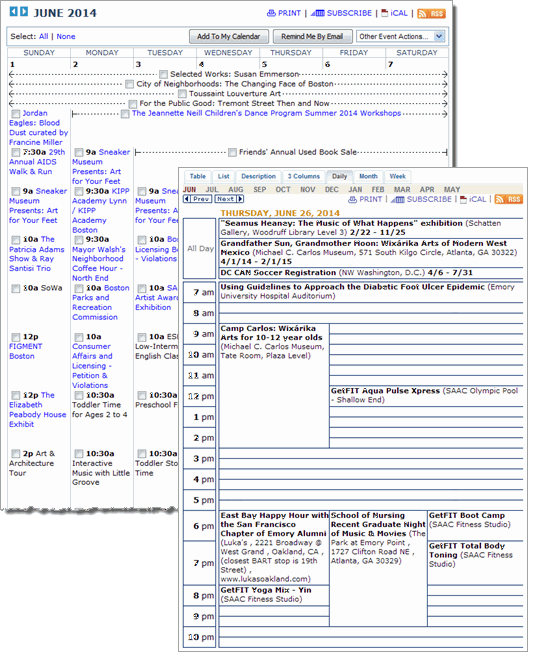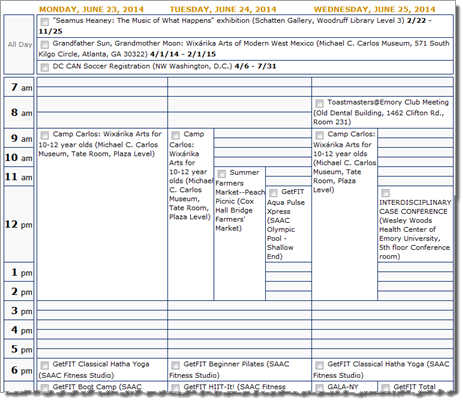Classic Month and Day calendar views
The Classic Month and Day calendar views include Classic Month, Classic Multi-Week, Classic Day, and Classic Multi-Day.
Use when your goal is to
- Present events in a traditional calendar format visitors are comfortable with.
- Display events, which take place on a non-standard number of days (for example, 3), side by side.
- Display events, which take place on a non-standard number of weeks (for example, 5), on one page.
- Present events or event-related information, such as menus, for which you don't want to display a start time.
Don't use when your goal is to
- Subgroup events by start time, time block, or location.
- Feature specific events using unique formatting.
- Provide notes and other event details in the calendar view.
- Hide ongoing events in the calendar view.
What are ongoing events and how should I handle them?
Ongoing and multi-day events are listed above events with regular start times.
Description For Month views, a month's or multiple weeks' worth of events are displayed per page organized by week and then by day.
For Day views, a day's or multiple day's worth of events are displayed per page organized by start time.
Examples

Classic Month and Classic Day calendar views
Settings to notice
Top left calendar: Classic Month view
|
Bottom right calendar: Classic Day view
Tip In Classic Multi-Day view, each day is a column:
|


